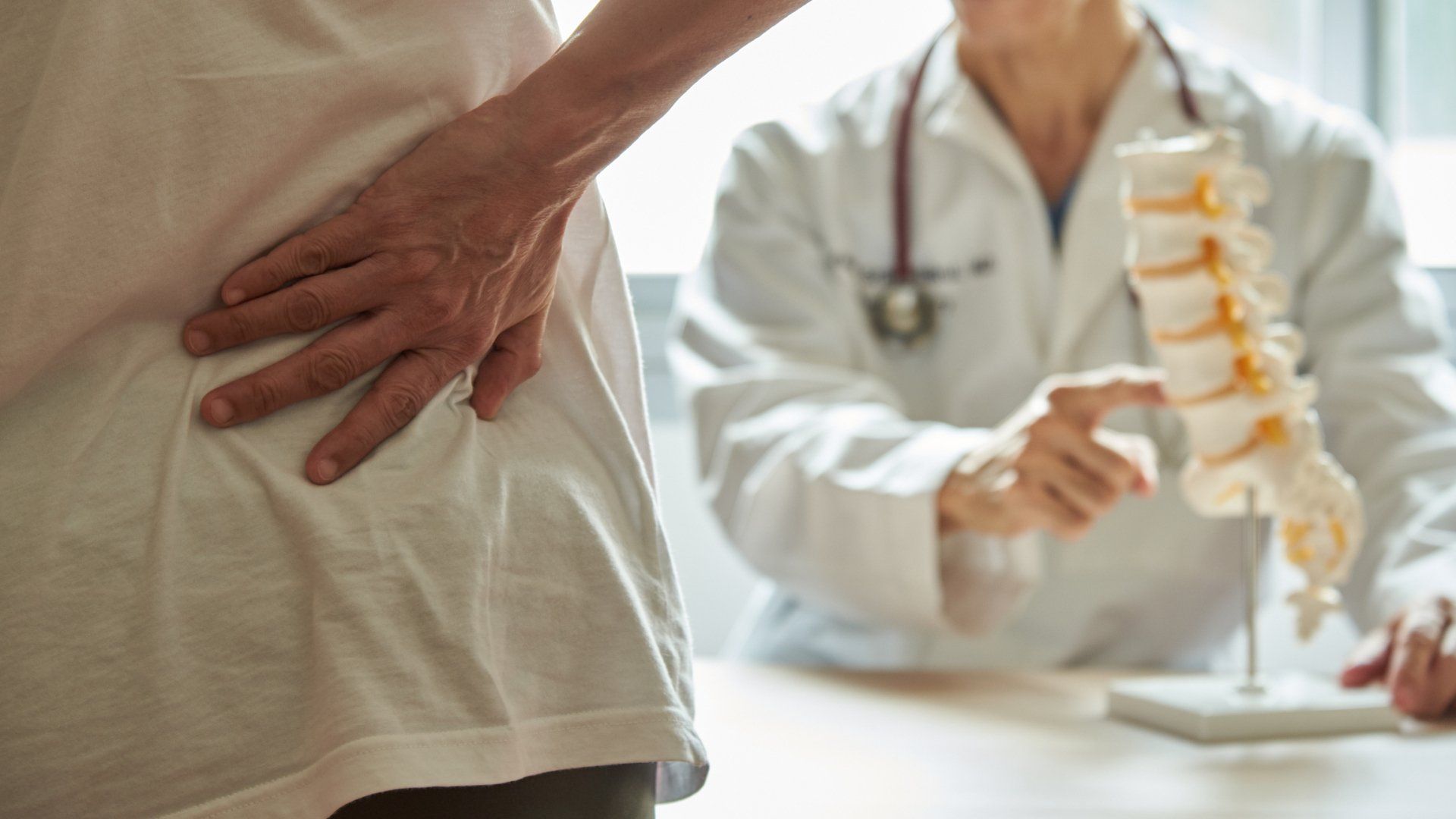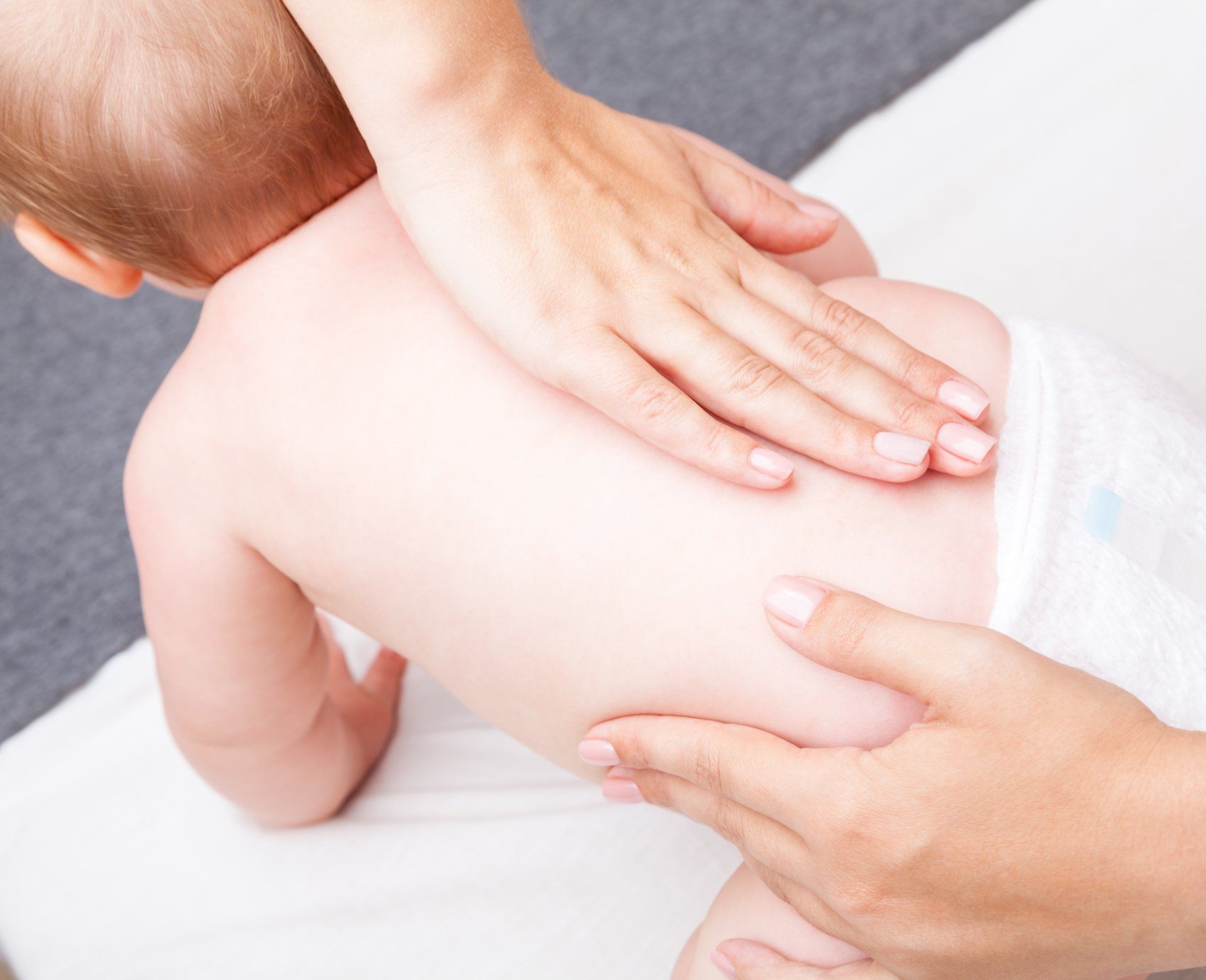Common Conditions That We Treat at Clemons Chiropractic
Chiropractic care is effective for a wide variety of conditions - not just back pain. From infants who are just days old to older adults, children, athletes, men, and women, chiropractic care is appropriate for almost anyone. It offers a drug-free alternative to pain management, improved mobility, and enhanced function for conditions ranging from asthma to PMS and headaches to carpal tunnel. Chiropractic care is also very important for injury recovery and rehabilitation, following auto accidents, falls and other personal injuries.
Auto Accident Injuries
Automotive Accidents
Numerous studies have shown that years after auto accident victims settle their insurance claims, roughly half of them state that they still suffer from symptoms from their injuries.
If you have been involved in a car accident, your injuries need to be taken very seriously. Because symptoms of some injuries can take weeks or months to manifest, it is easy to be fooled into thinking that you are not as injured as you really are.
Too often, people don't seek treatment following a car accident because they don't feel hurt. Unfortunately, by the time more serious complications develop, some of the damage from the injury may have become permanent. Numerous studies have shown that years after accident victims, especially those with whiplash injuries, settle their insurance claims, roughly half of them state that they still suffer from symptoms from their injuries. If you have been in a motor vehicle or any other kind of accident, don't assume that you escaped injury if you are not currently in pain. Contact us today!
Whiplash
Due to their complicated nature and profound impact on people's lives, few topics in health care generate as much controversy as whiplash injuries. Unlike a broken bone where a simple x-ray can validate the presence of the fracture and standards of care can direct a health care professional as to the best way in which to handle the injury, whiplash injuries involve an unpredictable combination of nervous system, muscles joints and connective tissue disruption that is not simple to diagnose and can be even more of a challenge to treat. In order to help you understand the nature of whiplash injuries and how they should be treated, it is necessary to spend a bit of time discussing the mechanics of how whiplash injuries occur.
Injuries Resulting from Whiplash
Neck Pain
Headaches
TMJ Problems
Brain Injury
Dizziness
Low Back Pain
Back & Shoulder Pain
Shoulder Pain
Shoulder pain can have a number of different causes, ranging from an injury like a car accident, to a chronic problem like arthritis. Patients who experience shoulder pain may be surprised by the intensity and duration of the pain. The shoulder area is so essential for completing daily activities that it makes sense that the shoulder pain injury should be taken seriously and treated to avoid worsening your condition.
Symptoms
Some signs that shoulder pain needs immediate attention may include a decreased ability to hold objects, decreased functioning of the arm, shoulder pain that persists even while at rest, shoulder pain that lasts more than a day or two, and unusual twinges or aches in the shoulder area.
Treatment
Care for an injured shoulder may include applying heat, applying ice packs, gentle manipulation from the chiropractor to help the shoulder return to its original state of functionality, and gentle stretching and strengthening exercises that the patient can perform at home.
Back Pain: Upper/Neck
Most neck and upper back pain is caused by a combination of factors, including injury, poor posture, chiropractic subluxations, stress, and in some instances, disc problems. The spinal cord runs through a space in the vertebrae to send nerve impulses to every part of the body. Between each pair of cervical vertebrae, the spinal cord sends off large bundles of nerves that run down the arms and to some degree, the upper back. This means that if your arm is hurting, it may actually be a problem in the neck! Symptoms in the arms can include numbness, tingling, cold, aching, and "pins and needles".
These symptoms can be confused with carpal tunnel syndrome, a painful condition in the hands that is often found in people who work at computer keyboards or perform other repetitive motion tasks for extended periods. Problems in the neck can also contribute to headaches, muscle spasms in the shoulders and upper back, ringing in the ears, otitis media (inflammation in the middle ear, often mistaken for an ear infection in children), temporomandibular joint dysfunction (TMJ), restricted range of motion and chronic tightness in the neck and upper back.
Lower Back Pain
There are many different conditions that can result in low back pain, including: sprained ligaments, strained muscles, ruptured disks, trigger points and inflamed joints. While sports injuries or accidents can lead to injury and pain, sometimes even the simplest movements, like picking up a pencil from the floor, can have painful results. In addition, conditions such as arthritis, poor posture, obesity, psychological stress and even kidney stones, kidney infections, blood clots, or bone loss can lead to pain.
Due to the fact that there are a whole lot of things that can cause low back pain, and some of those things can be quite serious if left untreated, it is important to seek professional help. Chiropractors are the experts at diagnosing the cause and determining the proper treatment for low back pain.
Body Pain
Shin Splints
Shin splints are characterized by pain in the front part of the lower leg. It occurs on the inside edge of the large bone there — the tibia. This condition is common in runners, but can also occur in other physically active people.
Several factors increase your chance of developing shin splints, such as:
- Running long distances or on hills or uneven surfaces
- Training incorrectly or too much
- Switching your routine
- Wearing the wrong shoes
- Not warming up properly
- Foot problems
TMJ
The temporomandibular joint connects the jawbone to the skull. According to the National Institute of Dental and Craniofacial Research, up to 10 million people suffer from painful temporomandibular joint disorder (TMD). Symptoms include pain in the face and neck, locked jaw or limited jaw movement, painful clicking when moving the mouth, dizziness, difficulty chewing or swallowing and a change in the way the teeth fit together. TMD is about four times more common in women than men.
Plantar Fascitis
Plantar fasciitis is one of the most common explanations for heel pain. It is caused by inflammation to the thick band that connects the toes to the heel bone, called the plantar fascia, which runs across the bottom of your foot. The condition is most commonly seen in runners, pregnant women, overweight people, and individuals who wear inadequately supporting shoes. Plantar fasciitis typically affects people between the ages of 40 and 70.
Osteoarthritis
Osteoarthritis in the knee and hip areas can be an excruciating injury and one that is often a chronic condition if left untreated. Chiropractic care for hip osteoarthritis and knee osteoarthritis can be beneficial for patients who have been unable to find relief from the pain in any other way.
Knee Pain
Knee pain is common in people of all ages. It may start suddenly — such as after exercise or an injury. But it can also develop over time, starting as minor discomfort. Chiropractic care for knee pain includes first identifying the underlying cause of the pain, which could be an injury, mechanical problem, or some kind of arthritis. Once this is known, the chiropractor can determine the best treatment for the pain.
Pinched Nerve
When nerves become 'pinched,' injury, spasm, and inflammation of the surrounding muscles cause the nerve to become compressed, resulting in pain. Most of the time, what is called a pinched nerve is actually an irritated or inflamed nerve where the nerve itself is not pinched. In most cases, nerves become irritated and inflamed when the bones, joints or muscles of the spine are not in their proper position or are not moving properly. This condition is called a "subluxation", the treatment of which is the specialty of the doctor of chiropractic.
When nerves do become 'pinched', such as in Carpal Tunnel Syndrome, Sciatica, and Thoracic Outlet Syndrome. In each of these cases, injury, spasm, or inflammation of the surrounding muscles and connective tissue causes the nerve to become compressed, resulting in pain. These conditions are referred to as "tunnel syndromes." Treating tunnel syndromes is more complex than treating a simple spinal subluxation, but they usually respond very well to chiropractic care, especially when combined with other physical therapies, such as exercises and stretches.
Conditions Affecting Women
Pregnancy
During pregnancy, a woman's center of gravity shifts forward to the front of her pelvis. This additional weight in front, causes stress to the joints of the pelvis and low back. As the baby grows in size, the added weight causes the curvature of her lower back to increase, placing extra stress on the fragile facet joints on the back side of the spine. Any pre-existing problems in a woman's spine tend to be exacerbated as the spine and pelvis become overtaxed, often leading to pain and difficulty performing normal daily activities.
Frozen Shoulder
The term frozen shoulder encompasses a wide variety of restrictive shoulder disorders and can also be referred to as adherent bursitis, pericapsulitis, obliterative bursitis and periarthritis. Regardless of what it is called, manipulation of the joint and neuro-muscular-skeletal rehabilitation are needed to resolve the lack of mobility.
The good news is that although the causes of frozen shoulder are varied, treatment is straight forward and the disorder can be resolved. Often clinicians, including our experienced and caring staff, can provide the correct manipulation and physiotherapy to help you regain mobility and resolve the disorder. Contact our office so we can address your condition immediately.
Fibromyalgia
A combination of chiropractic, trigger point therapy, and lifestyle changes has proven to be very effective in decreasing the severity and duration of the physical pain of fibromyalgia. The word fibromyalgia comes from the Latin term for fibrous tissue (fibro) and the Greek ones for muscle (myo) and pain (algia). Fibromyalgia syndrome is chronic disorder which includes widespread muscle pain, fatigue, and multiple tender points that affects 3-6 million people in the United States. For reasons that are unclear, more than 90 percent of those who develop fibromyalgia are women. In addition to pain and fatigue, people who have fibromyalgia may experience:
sleep disturbances
morning stiffness
headaches
irritable bowel syndrome
painful menstrual periods
numbness or tingling of the extremities
restless legs syndrome
temperature sensitivity
cognitive and memory problems (sometimes referred to as "fibro fog")
PMS
Several studies have shown that chiropractic care can help decrease PMS symptoms without the potential side effects of prescription drugs. Premenstrual syndrome (PMS) is characterized by mood swings, swollen abdomen, headaches, back pain, food cravings, fatigue, irritability or depression in the days before a woman's monthly period. The severity of these symptoms can range from mild to incapacitating and may last from a couple of days to two weeks.
Although chiropractic care cannot fix the way your body responds to the hormonal changes that preceed menstruation, several studies have shown that it can help decrease many of the symptoms of PMS without the potential side effects of prescription drugs. Since the nerves that exit the low back are responsible for regulating all of the tissues in the lower abdomen, any pressure or irritation that can be alleviated through chiropractic care can be helpful.
Headaches
Headaches affect just about everyone at some point and they can present themselves in many different ways. Some people only experience pain in one part of their head or behind their eyes, some people experience a pounding sensation inside their whole head, and some people even experience nausea, while others do not. The pain itself may be dull or sharp and may last for anywhere from a few minutes to a few days. Fortunately, very few headaches have serious underlying causes, but those that do require urgent medical attention.
Although headaches can be due to a wide variety of causes, such as drug reactions, temporomandibular joint dysfunction (TMJ), tightness in the neck muscles, low blood sugar, high blood pressure, stress and fatigue, the majority of recurrent headaches are of two types: tension headaches (also called cervicogenic headaches) and migraine headaches. There is a third, less common, type of headaches called a cluster headache that is a cousin to the migraine.
Herniated Discs
Slipped Disc
You may have heard the term "slipped disc" used to describe a low back injury. Discs do not actually "slip." Rather, they may herniate or bulge out from between the bones. A herniation is a displaced fragment of the center part or nucleus of the disc that is pushed through a tear in the outer layer or annulus of the disc. Pain results when irritating substances are released from this tear and also if the fragment touches or compresses a nearby nerve. Disc herniation has some similarities to degenerative disc disease and discs that herniate are often in an early stage of degeneration. Herniated discs are common in the low back or lumbar spine.
Sciatica
The sciatic nerve is the longest nerve in your body. It runs from your pelvis, through your hip area and buttocks and down each leg. The sciatic nerve branches into smaller nerves as it travels down the legs providing feeling to your thighs, legs, and feet as well as controlling many of the muscles in your lower legs. The term sciatica refers to pain that radiates along the path of this nerve.
Improved Health
Stress
You may feel physical stress as the result of too much to do, not enough sleep, a poor diet or the effects of an illness. Stress can also be mental: when you worry about money, a loved one's illness, retirement, or experience an emotionally devastating event, such as the death of a spouse or being fired from work.
However, much of our stress comes from less dramatic everyday responsibilities. Obligations and pressures which are both physical and mental are not always obvious to us. In response to these daily strains your body automatically increases blood pressure, heart rate, respiration, metabolism, and blood flow to your muscles. This response is intended to help your body react quickly and effectively to a high-pressure situation.
Wellness
Chiropractic is so much more than simply a means of relieving pain. Ultimately, the goal of chiropractic treatment is to restore the body to its natural state of optimal health.
Regular chiropractic care, eating a healthy diet, taking vitamin supplements, keeping your weight under control and stress management are all part of an overall wellness lifestyle that, if followed, results in a longer, healthier and pain-free life. Here are a list of basic tips to help you maintain a healthier, more vibrant body.
Orthotics
Whenever you run, walk or stand, your feet form the foundation of your body. Sometimes, though, the shape of your foot or an injury can affect the angle at which your foot strikes the ground. If severe enough, this can cause pain in the foot, as well as in the legs, low back and other areas of the body.
Because of the importance of the feet in our lives, stabilizing them is an important part of chiropractic care. If you have an imbalance in your feet, your chiropractor may suggest orthotics. These customized shoe inserts can reduce symptoms and improve your walking and running without the need for treatments like surgery.
Pediatric Alignments
Colic
The theory that an irritated spine may contribute to colic is supported by the frequent improvement in symptoms with gentle chiropractic adjustments. Because the birthing process is very stressful on the neck of a newborn, it is very common for there to be several subluxations in the neck and back that can irritate the tiny and delicate nervous system. It has also been observed that babies with colic seem to need more attention and are more sensitive to the things around them than other babies - again indicating that there are some neurological differences.
ADHD
It is not entirely certain what causes ADHD, but the current thought is that it is a combination of an overactive nervous system, coupled with a decrease in the brain's ability to filter out extraneous sights, sounds, thoughts and emotions. Although chiropractors don't directly treat ADHD, there are a number of things that your chiropractor can do to help eliminate things that stress a child's nervous system, such as:
- Remove spinal subluxations that irritate the nervous system
- Suggest dietary changes to avoid common problem foods
- Test for allergies that may be stressing the nervous system
- Suggest changes to the home to help reduce exposure to toxic chemicals
Ear Infections
Otitis media commonly emerges when there is improper drainage of the lymph system in the neck, or when the muscle that is supposed to keep bacteria or viruses from entering the eustacean tubes (the tubes in the back of the throat that lead to the inner ear) doesn't work correctly. While both of these things can happen in adults, it usually does not result in an ear infection for two reasons: First, the shape and the length of the eustacean tubes are different in adults, allowing easier drainage and making it more difficult for a bacteria to invade. Second, adults tend to spend more time upright than young children do, which also encourages better drainage and decreases risk of infection.
In either case, the underlying root cause of otitis media is usually a mechanical problem. There is either a reduced or blocked drainage of the lymph vessels in the neck lymphatic chains that causes a build up of fluid in the inner ear, or a loss of normal function of the small muscle at the opening of the eustacean tube in the throat that allows bacteria and viruses from the mouth to enter the inner ear. Instead of treatment that tries to kill the bacteria or virus, a more natural approach would be to restore normal drainage of the ears and neck lymphatics. This is most effectively done through chiropractic
Repetitive Use Injuries
Tennis Elbow
A chiropractor will be able to determine if a misalignment in your spine, neck, or shoulders may be causing an overcompensation injury. A basic chiropractic adjustment may be all your need to stop your symptoms of pain in some cases. Your chiropractor will also work with you to determine which activities may have caused your injury and will have you rest your arm while refraining from the trigger activities. Your chiropractor will also likely tell you to apply ice to the outside elbow two or three times a day for two to three weeks. Compression, by using an elastic bandage, is helpful to provide relief and prevent further injury. Lastly, elevating your elbow whenever possible will limit or prevent swelling.
If rest and ice do not alleviate your tennis elbow symptoms, then a therapy plan is often the recommended next step. You will learn exercises to stretch and strengthen the muscles and tendons in your arm. Your chiropractor will also work with you to develop proper form and technique regarding the activity that was the likely culprit to developing your tennis elbow. Depending on the severity of the injury, your chiropractor may suggest you wear a brace or forearm strap, which will reduce stress on the injured tissue while it heals.
Carpal Tunnel
There are a number of different ways to treat this condition. In most cases, a chiropractic adjustment to the affected area is an extremely effective solution. In some cases, a misalignment in either the back or neck can cause this condition, and chiropractic manipulation of the neck and/or spine can also serve as an effective treatment option. These treatments, along with stretching, and strengthening exercises, can in most cases effectively alleviate and eventually eliminate the symptoms associated with CTS. Contact us today!
Respiratory Function
Asthma
Allergies are often treated with chiropractic care. Many allergic and asthmatic reactions are caused by hypersensitivity of the immune system and/or respiratory system. Researchers have found that the immune and respiratory systems depend on normal communication from the brain and spinal cord to control and coordinate their functions properly.
Therefore, spinal misalignment, could cause an imbalance in your nervous system function. This spinal misalignment could possibly produce or exaggerate asthmatic and allergic symptoms. For example; many asthma and allergy sufferers experienced traumas such as head injuries, auto accidents, or falls which could have injured their spines. The good news is that we can perform an spinal examination to determine if chiropractic care can reduce your allergic and asthmatic reactions. Schedule an appointment today!
Allergies
Allergies are often treated with chiropractic care. Many allergic and asthmatic reactions are caused by hypersensitivity of the immune system and/or respiratory system. Researchers have found that the immune and respiratory systems depend on normal communication from the brain and spinal cord to control and coordinate their functions properly.
Therefore, if your spine is misaligned, it could cause an imbalance in your nervous system function. This spinal irritation could possibly produce or exaggerate asthmatic and allergic symptoms. For example; many asthma and allergy sufferers experienced traumas such as head injuries, auto accidents, or falls which could have injured their spines. The good news is that we can perform an spinal examination to determine if chiropractic care can reduce your allergic and asthmatic reactions. Schedule an appointment today!











